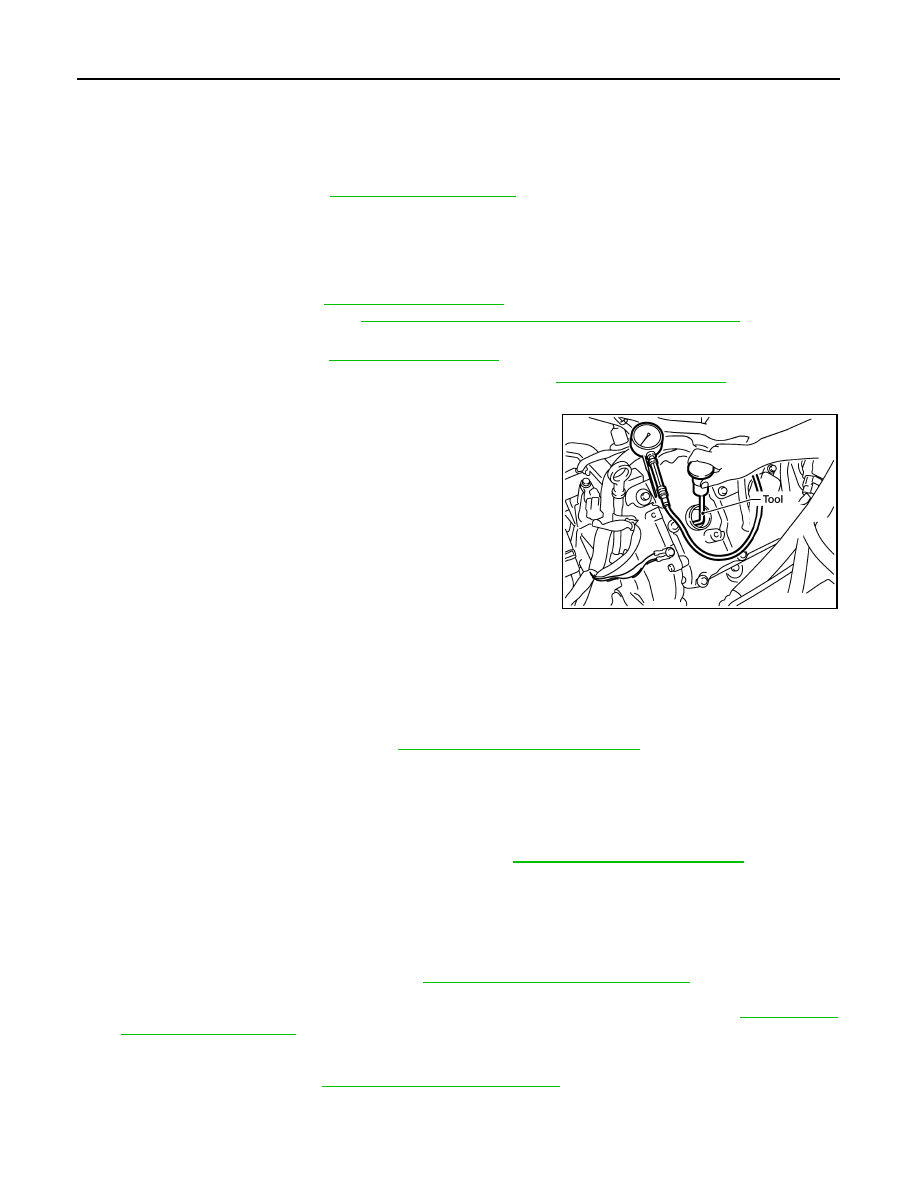Infiniti QX56 (Z62). Manual - part 644

EM-16
< BASIC INSPECTION >
COMPRESSION PRESSURE
COMPRESSION PRESSURE
Inspection
INFOID:0000000006289521
1.
Warm up engine thoroughly. Then, stop it.
2.
Release fuel pressure. Refer to
CAUTION:
If CONSULT-III is not used to release fuel pressure leave the fuel pump fuse disconnected until
step 7.
3.
Remove fuel pump fuse in IPDM E/R.
NOTE:
• For the fuse number, refer to
.
• For the fuse arrangement, refer to
PG-143, "Fuse, Connector and Terminal Arrangement"
.
4.
Remove engine cover. Refer to
5.
Remove ignition coil and spark plug from each cylinder. Refer to
.
6.
Connect engine tachometer (not required in use of CONSULT-III).
7.
Install the compression tester with Tool [SST: EG15050500 (J-
45402)] into the spark plug hole.
8.
Measure compression pressure using compression gauge connected with flexible type adapter (commer-
cial service tool).
9.
With accelerator pedal fully depressed, turn ignition switch to “START” for cranking. When the gauge
pointer stabilizes, read the compression pressure and the engine rpm. Perform these steps to check each
cylinder.
CAUTION:
• Measure a six-cylinder under the same conditions since a measurement depends on measure-
ment conditions (engine water temperature, etc.).
• Always use a fully changed battery to obtain the specified engine speed.
• If the engine speed is out of the specified range, check battery liquid for proper gravity. Check the
engine speed again with normal battery gravity. Refer to
PG-159, "How to Handle Battery"
.
• If compression pressure is below the minimum value, check valve clearances and parts associated with
combustion chamber (valve, valve seat, piston, piston ring, cylinder bore, cylinder head, cylinder head
gasket). After checking, measure compression pressure again.
• If a cylinder has low compression pressure, pour a small amount of engine oil into the spark plug hole of
the cylinder to re-check it for compression.
- If the added engine oil improves the compression, piston rings may be worn out or damaged. Check pis-
ton rings and replace if necessary. Refer to
EM-107, "Disassembly and Assembly"
.
- If the compression pressure remains at low level despite the addition of engine oil, valves may be mal-
functioning. Check valves for damage. Replace valve or valve seat accordingly. Refer to
• If two adjacent cylinders have respectively low compression pressure and their compression remains
low even after the addition of engine oil, cylinder head gaskets are leaking. In such a case, replace cyl-
inder head gaskets. Refer to
EM-87, "Removal and Installation"
10. After inspection is completed, install removed parts.
11. Start the engine, and check that the engine runs smoothly.
WBIA0605E
Compression pressure
: Refer to